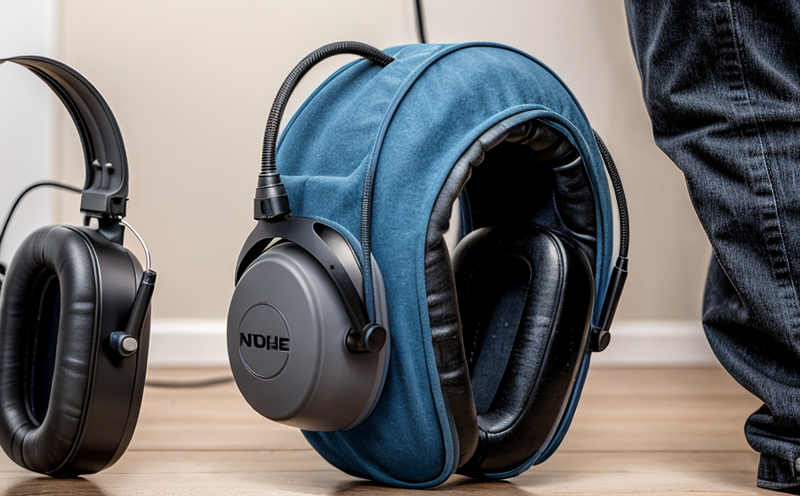JIS T8162 Earmuff Attenuation Testing
The JIS T8162 standard is an integral part of the regulatory framework governing noise control in Japan, ensuring that hearing protection devices meet stringent safety and performance requirements. This test assesses the sound attenuation provided by earmuffs under specified conditions, which is critical for workers exposed to high levels of noise in various industries such as manufacturing, construction, and transportation.
The primary aim of JIS T8162 Earmuff Attenuation Testing is to evaluate the effectiveness of earmuffs in reducing environmental noise. The test involves several key parameters that must be adhered to ensure accurate results. These include the frequency response, head impedance, and the angle at which sound waves are incident on the earmuff. Compliance with these parameters ensures that the testing environment accurately simulates real-world conditions.
For this test, the earmuffs are subjected to a series of noise levels, typically ranging from 85 dB to 120 dB, as specified in the standard. The attenuation is measured by comparing the sound pressure level before and after the earmuff is placed on a specially designed dummy head. The results are then analyzed based on the frequency range of the noise, which can vary depending on the application.
The test procedure involves precise specimen preparation, where the earmuffs must be fitted to the dummy head in accordance with the standard's specifications. This ensures that any discrepancies are due solely to the performance of the earmuff and not its fit or placement. The testing apparatus used is calibrated according to international standards to ensure accurate measurements.
The results of this test provide critical data on the effectiveness of earmuffs, which is essential for quality control, compliance with regulatory requirements, and continuous improvement in product design. By ensuring that earmuffs meet JIS T8162 standards, manufacturers can guarantee that their products are safe and effective in protecting workers from noise-induced hearing loss.
Understanding the nuances of this test helps stakeholders make informed decisions about the auditory protection provided to employees. For instance, quality managers can use these results to ensure product consistency and reliability. Compliance officers can verify whether products meet regulatory requirements, while R&D engineers can refine designs based on real-world performance data.
- Why Choose This Test: Ensures compliance with JIS standards, providing reliable sound attenuation data.
- Competitive Advantage and Market Impact: Demonstrates commitment to worker safety, enhancing brand reputation and market competitiveness.
Industry Applications
The JIS T8162 Earmuff Attenuation Testing is particularly relevant in industries where noise levels are a significant occupational hazard. These include:
- Metalworking and manufacturing, where machinery generates high-frequency noise.
- Petrochemical plants, which often have noisy environments due to industrial processes.
- Construction sites, where power tools and heavy machinery operate at high decibels.
In these sectors, the effectiveness of hearing protection is paramount. By adhering to JIS T8162 standards, companies can ensure that their employees are adequately protected against noise-induced hearing loss. This not only enhances safety but also contributes positively to employee morale and productivity.
Why Choose This Test
Selecting the JIS T8162 Earmuff Attenuation Testing offers several advantages:
- Compliance with International Standards: Ensures that products meet the stringent requirements set by the Japanese Industrial Standard, enhancing credibility and market acceptance.
- Precision Measurement: Utilizes calibrated equipment to provide accurate attenuation data across various noise levels and frequencies.
- Reproducibility: The standard ensures consistent testing results, facilitating quality control and process improvement.
- Regulatory Requirement Fulfillment: Necessary for compliance with national regulations, ensuring legal adherence and avoiding potential penalties.
The test's precision and reliability make it an essential tool in the development and quality assurance of hearing protection devices. It provides critical insights into product performance, enabling continuous improvement and innovation.





